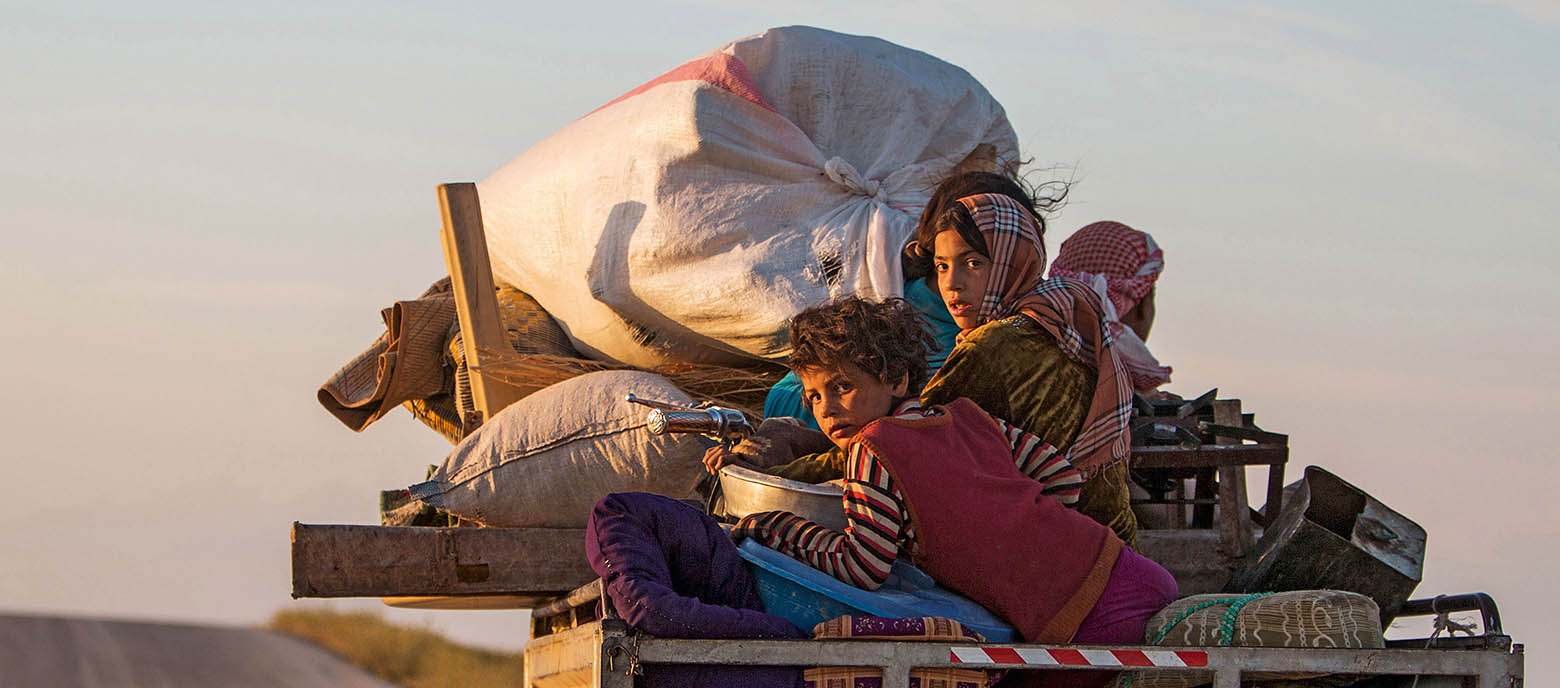Infographic
Unevenly distributed
With thousands of Syrians heading for Europe, migration has become an ever-present and urgent issue in this part of the world. However, in the past the main burden of providing for refugees was borne by the developing countries, not the wealthy nations: at the end of 2014, almost 90 per cent of the world’s refugees were hosted by the poorer countries, and 25 per cent were living in least developed countries (LDCs) – a disproportionately heavy burden.
Close to home
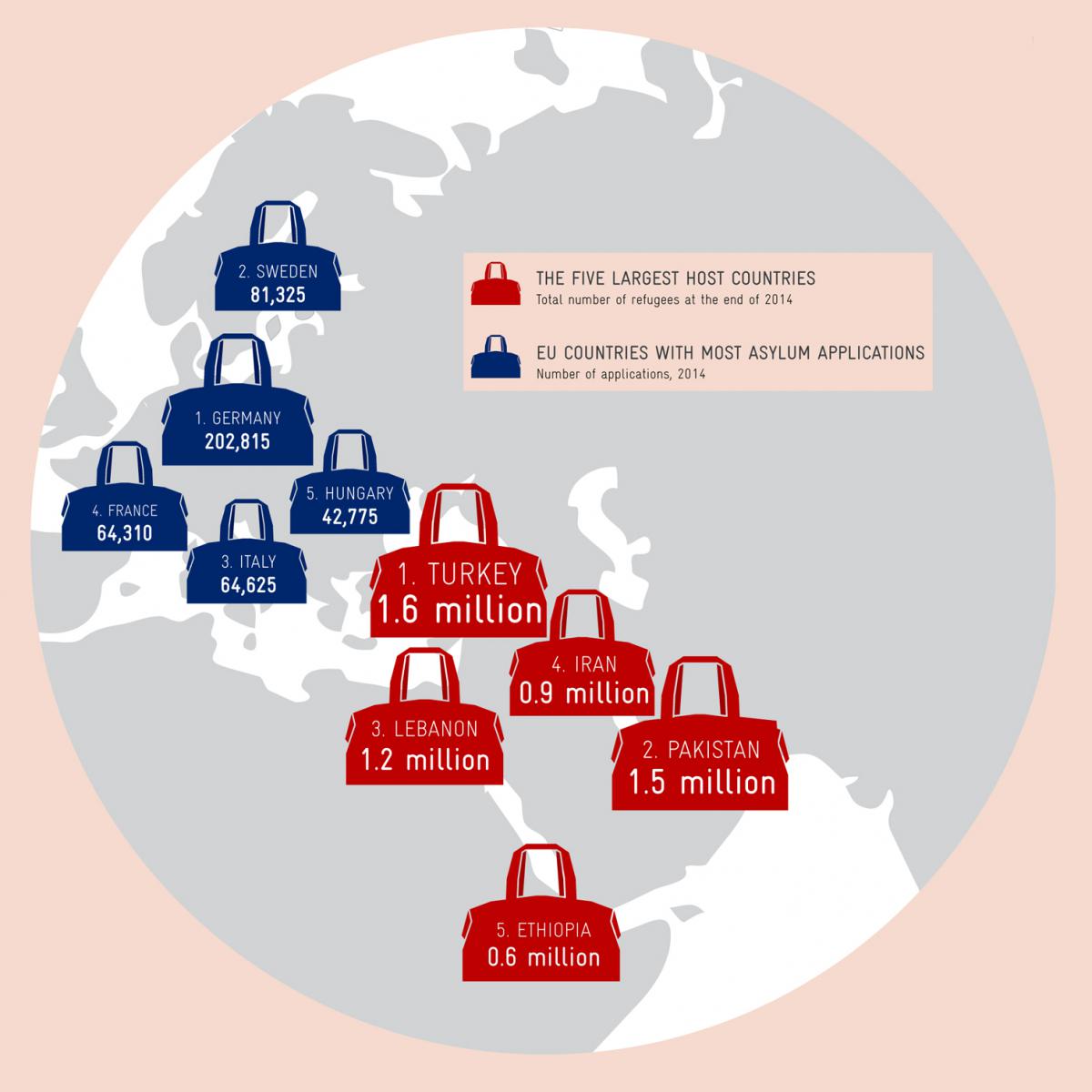
The main countries of origin
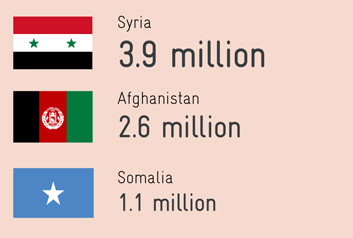
Most of the refugees registered by UNHCR in 2014 came from Syria, Afghanistan and Somalia. The fierce conflicts raging in all three countries mean that many people live in constant fear for their lives.
More than half are children
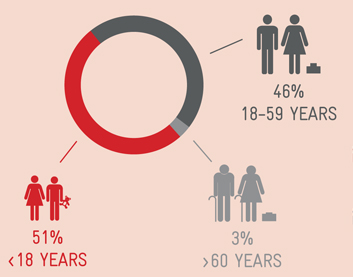
In 2014, more than half the world’s refugees were under 18. The rest were mainly adults aged 59 or less. The over-60s accounted for a very small percentage.
Better shelter
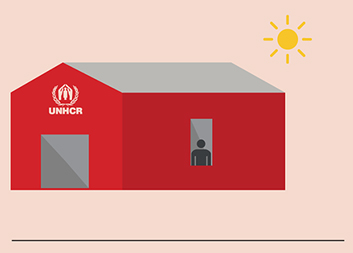
Furniture chain IKEA has developed an emergency housing solution for the United Nations which is designed to provide better shelter for refugees from wind and weather. In some parts of the world it is set to replace tents, which generally have a lifespan of just six months and are less durable. IKEA’s shelter is better insulated and has an expected lifespan of three years.
A model of hospitality

Welcome Dinner is a Swedish initiative which encourages families to host a dinner for refugees. It’s an opportunity for everyone to get to know one another, share a meal and spend a – hopefully – pleasant evening together. The initiative has now been taken up and replicated in many other countries and cities, including Berlin, Hamburg and Athens.
A new home
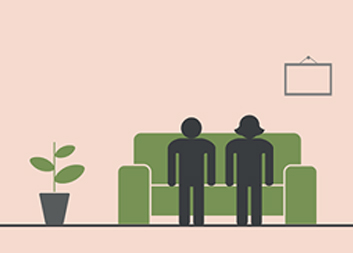
Refugees Welcome is a Berlin-based initiative which finds vacant rooms, e.g. in shared apartments, for refugees. More than 1,500 people keen to offer accommodation throughout Germany have now registered with the website.
Sources: UNHCR, IOM, Eurostat, Frankfurter Allgemeine Zeitung, New York Times, Refugees Welcome
published in akzente 4/15
Desire for a new life
Essay: Refugees
‘Tremendous challenge’
Interview: refugee crisis
A matter of chance
Guest article: Saša Stanišić
